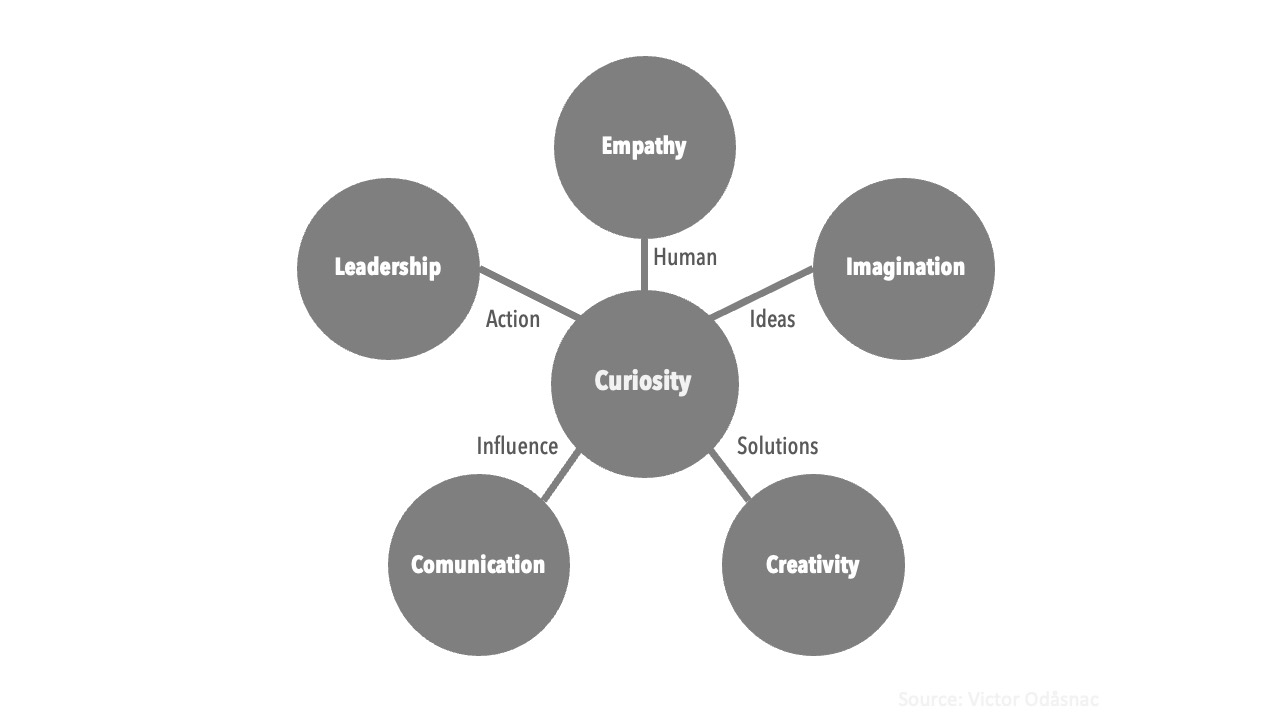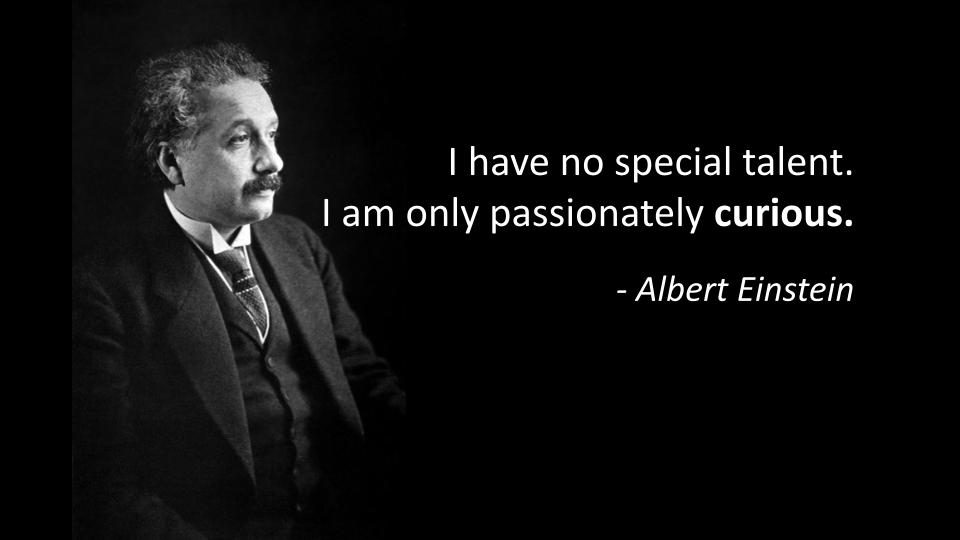If there is an activity that is uniquely human and difficult to replace by machines, it is innovation.
The creation and implementation of new ideas will remain a genuinely human activity for some time. As long as we think of innovation as the activity that seeks to fulfill human needs in a new better way, we will need humans to drive it.
Although automation will replace some jobs, new waves of innovation will drive new waves of employment, despite of a new kind.
Innovating requires a set of skills that conform the Human Factor. Those are the qualities required to fully grasp the rational and irrational needs of people, make sense of their behaviors, find ways to connect ideas and act upon them to address society’s problems.
The elements that constitute the Human Factor are:
Curiosity: It is the desire to learn and explore new things. It is characterized by a questioning mindset and a drive to seek out information and knowledge. Curiosity can involve asking questions, trying out new things, and seeking out new experiences. It is an important quality that helps us grow and develop, both personally and professionally. Curiosity is often associated with traits such as open-mindedness, critical thinking, and the ability to analyze and synthesize information. It is a key component of innovation, as it drives us to explore new ideas.
Google Search have made an unprecedented amount of information available to all of us, yet only the curious person that queries and queries again, is able to distill that ocean of data into drops of knowledge. Learning is no longer limited by access to information, but by our own ability be curious and seek answers. In a changing professional world, the questions we ask ourselves are becoming more important than the answers we already have.
We are constantly bombarded with a vast amount of information and messages. Our curiosity combined with our ability to filter what is relevant to us determines what we learn and what we do not.
Empathy: the ability to understand needs, sensitivities, emotions, and to build relationships and connections with others. Connecting with people, understanding their feelings, fears, and desires, and putting ourselves in their shoes are key to understanding customer needs and generating trust and sympathy. The irrationality of human beings is one of the most difficult aspects for algorithms to interpret and predict. Anticipating irrational human needs and preferences is still a capacity that is difficult for machines to replicate.
Imagination: the ability to conceive ideas, visualize what has not been seen before, work with abstract concepts, generate visions, and establish goals and plans to achieve them. The ability to visualize in the mind what has not been seen before is crucial for innovation. It allows us to imagine a future that is different and better than the present.
Creativity: the ability to connect dots, connect ideas and people, think differently, see things from new angles, identify opportunities, and create solutions and value propositions. Creativity is about non-linear thinking or lateral thinking. It allows us to see things from a different perspective, to see beyond the obvious, and to connect ideas in a way that creates value. While imagination allows us to visualize and conceptualize what does not yet exist or cannot be seen, creativity allows us to build something with it.
Communication: the ability to clearly and concisely communicate an idea, show another point of view, persuade, and evoke emotions in others. Communication is key to influencing others. Delivering a message in a clear, concise, and relevant way to the receiver in order to elicit the desired reaction requires the ability to adapt the message to the audience by listening and understanding them. In any form - verbal, written, or visual - effective communication is a decisive element in an economy where attention is a scarce commodity.
Leadership: the ability to mobilize, inspire, and motivate others to act for a certain purpose or cause is possibly the most valued skill in the business world. It requires all of the above skills, as well as more subtle qualities such as the ability to build trust, motivate, excite, take initiative, persevere, and show determination to achieve goals.
Of all these elements that conform the Human Factor, it is Curiosity the one that glues it all, because:
It is Curiosity for needs and emotions that drives Empathy. It is Curiosity for ideas that drives Imagination. It is Curiosity for solutions that drives Creativity. It is Curiosity for influencing others that drives Communication. It is Curiosity for results through action that drives Leadership.

All of them are intrinsic factors in innovating, in imagining and implementing solutions that connect with people’s needs and problems. We can foresee three areas in which the Human Factor will be crucial:
Technological innovation. Using scientific and technical advances to solve big problems.
Social innovation. Developing solutions that not only promote economic progress but also create a more just society in which there is room for everyone.
Artistic innovation. Culture is going to play a very important role in creating common elements and building bridges in a world that is increasingly easy to polarize and radicalise. Given the excess of information, extremes are gaining ground because they “over-simplify” what is difficult to understand. Art plays a fundamental role in understanding and communicating the essence of the complex.
These three areas are not independent but rather overlap and influence each other. For example, the democratization of audiovisual production tools through platforms like YouTube has enabled new artistic creators to have greater freedom and autonomy. Understanding technology, its capabilities, and implications will be a requirement across all three areas, as robots and artificial intelligence will be protagonists in all of them.
The activities connected with innovation are the ones that have the greatest opportunity to generate wealth and at the same time present less risk of being automated. It is the abilities of leadership, of imagining solutions, communicating them and involving others to implement them that will continue to be genuinely human.
Entrepreneurship, taking the initiative to change the world and make it better with the help of technology and AI is still a task that only people can do.
Extracted from ‘AI at Work’
